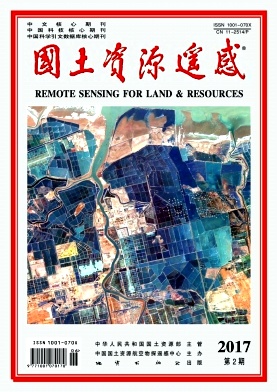LIANG Shouzhen, SUI Xueyan, YAO Huimin, WANG Meng, HOU Xuehui, CHEN Jinsong, MA Wandong. An analysis of influence of non-photosynthetic vegetation of deciduous broad-leaved forest on canopy FPAR: A method based on layered simulation[J]. Remote Sensing for Natural Resources, 2017, (2): 29-36. doi: 10.6046/gtzyyg.2017.02.05
| Citation: |
LIANG Shouzhen, SUI Xueyan, YAO Huimin, WANG Meng, HOU Xuehui, CHEN Jinsong, MA Wandong. An analysis of influence of non-photosynthetic vegetation of deciduous broad-leaved forest on canopy FPAR: A method based on layered simulation[J]. Remote Sensing for Natural Resources, 2017, (2): 29-36. doi: 10.6046/gtzyyg.2017.02.05
|
An analysis of influence of non-photosynthetic vegetation of deciduous broad-leaved forest on canopy FPAR: A method based on layered simulation
-
Abstract
Fraction of absorbed photosynthetically active radiation(FPAR) of the canopy is an important biophysical variable widely used in satellite-based production efficiency models to estimate the gross primary productivity(GPP).Vegetation canopy is composed primarily of photosynthetically active vegetation(PAV)and non-photosynthetic vegetation(NPV).Only the PAR absorbed by PAV is used for photosynthesis.Therefore, the photosynthetically active radiation absorbed by NPV in the canopy should be estimated and removed from canopy PAR so as to estimate GPP more accurately.Scattering by arbitrary inclined leaves(SAIL)model assumes canopy as a turbid medium with a number of layers, each treated as an infinite, horizontal, homogeneous medium.This assumption and configuration of model makes it possible to calculate PAR absorbed of each layers.In this study, SAIL model was used to calculate spectral reflectance and the PAR absorbed by PAV and NPV of deciduous broadleaved forest, and at last FPAR of NPV (FPARNPV) was calculated and analyzed.The results show that FPARNPV is dominated by canopy architecture.The contribution of NPV to canopy FPAR is low in high-cover regions, and the result is opposite in low-cover regions.NPV in the canopy can reduce reflectance in near infrared band.A significant and negative correlation is found between enhanced vegetation index(EVI)and FPARNPV.Though the simulation condition is ideal, the study is a good attempt which provides a means for acquiring deciduous broadleaf forests FPARNPV.
-

-
-
Access History







 DownLoad:
DownLoad: